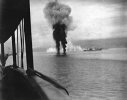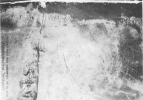My old man flew FM’s off of a CVE in the final months of the war. The Wildcat actually had a great reputation with the Japanese who considered it a comparable fighter to their own Zero. As @Llarry notes, it was the American ability to innovate tactically that secured the South Pacific during the first 24 months of the war while flying soon-to-be surpassed fighters like the F4F and P-40. On an interesting side note, the glamorous P-51 was not highly regarded in the Pacific, where pilots and ground crew found it too picky and flimsy for the harsh environment.As we all probably recollect, on December 7, 1941, the standard Navy fighter was the Grumman F4F-3 Wildcat.
-
Please take a moment and update your account profile. If you have an updated account profile with basic information on why you are on Air Warriors it will help other people respond to your posts. How do you update your profile you ask?
Go here:
Edit Account Details and Profile
WWII history and tactics
- Thread starter Uncle Fester
- Start date



